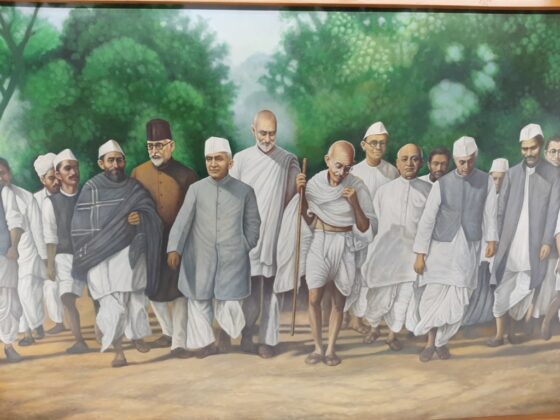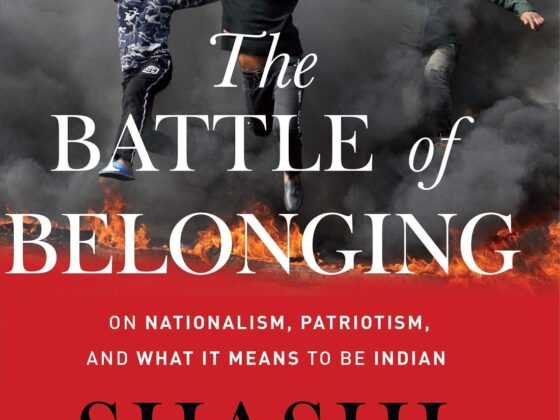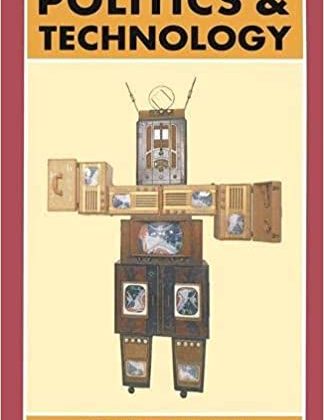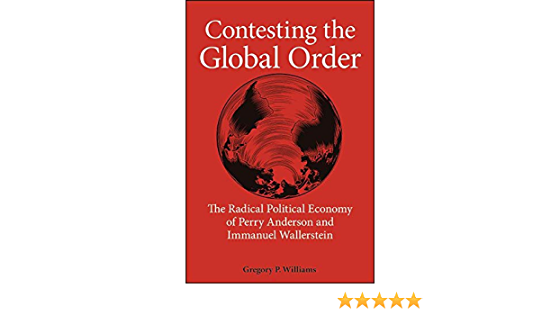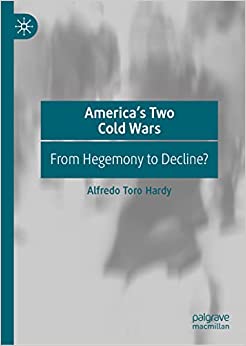
Book Name: America’s Two Cold Wars: Hegemony to Decline?
Author: Alfredo Toro Hardy
Publisher: Palgrave Macmillan
Year of Publication: March, 2022
Pages: 305
The war in Ukraine has necessitated a recalibration of US foreign policy as tensions intensify between America, its allies and Russia. The US’s ‘pivot to Asia’ policy has taken a hit in the face of Russia’s aggression in Ukraine. As global attention, once again, shifts to the former Cold War superpower, China appears to be reaping all the benefits in the ensuing power vacuum.
Alfredo Toro Hardy’s America’s Two Cold Wars: From Hegemony to Decline? is a timely addition, both in terms of what is unfolding presently and the literature that is emerging on the shortfalls of American foreign policy in its dealings with Russia and China. The former Venezuelan diplomat joins the intensifying debate on the emerging reality of a Cold War between the US and China and the broader debate surrounding America’s decline from being a global hegemonic power and its implications for the country’s international engagement with the rest of the world.
The book offers a comprehensive diagnosis of American foreign policy by way of a comparative analysis of the US’s Cold War with the Soviet Union with the emerging one with China from the American perspective and seeks to answer two questions: one, how different a strategic competitor is China to the erstwhile Soviet Union and two, how different is the US of today compared to its former self when it confronted and won the Cold War with the Soviets.
Hardy identifies five fundamental issues afflicting US foreign policy in its engagement with China – ideology (or lack thereof), squandered alliances, foreign policy-related inconsistencies, the country’s economic downturn and the containment strategy trap. The author’s key argument recurs throughout the book – that the US is confronting China in the emerging Cold War on a “wrong configuration of factors” (p. 168) and needs to “responsibly explore and analyse the options on the table” (p. 171).
In acknowledgement of the deficiencies facing America’s foreign policy regarding China, the author sets the context and provides readers with a succinct account of the collapse of the Soviet Union, the emergence of the period of US hegemony and the rise of China in the first two chapters. Hardy rightly emphasises that America is threatened by China’s ascendence – citing research done by the Pew Research Center that showed that 73 per cent of Americans viewed China negatively. In the author’s words, “Washington is aggrievedly and forcefully reacting against what it perceives as an existential contention” (p. 7).
Hardy also outlines the Chinese perspective and correctly concludes that Beijing is driven by its experience under imperialist powers during the ‘century of humiliation’ and economic mismanagement under Mao Zedong. Indeed, this coupled with the Tiananmen Massacre in 1989, controversy over Chinese dissident Fang Lizhi between 1989-1990, the Taiwan strait crisis in 1996, the bombing of the Chinese embassy in Belgrade (p. 23) by American forces and more recently, the independence movements in Hong Kong are insightful examples in understanding why the Party and now, Xi Jinping, are in pursuit of relentless centralisation of power and authority. Despite China’s adroitness in foreign affairs under Xi Jinping, the country’s great power ambitions are driven by domestic considerations and how the international community perceives these ambitions. The US’s belief in China’s disregard for a rules-based order is what the latter takes offence with – believing the former to be constraining it from taking its “rightful place in the world” (p.7). China eschews the American mindset of reverting to the Cold War mentality and instead argues for a more inclusive world where both states are mindful of their responsibilities.
The author offers a penetrating account of US-China relations – moving from cautious partners with mutual strategic interests to strategic competitors. A pragmatic agreement was drawn up that was mindful of the other’s national interests – the US would recognize the Communist government in China and give it legitimacy and in exchange, China would not seek to limit or challenge the “US’s power projection in Asia” (p.22). China’s gains from this arrangement were enormous and translated into divestment from Mao’s model of productivity and economic self-sufficiency, a foothold in Western markets and a WTO membership. However, 2008 marked the inflexion point in their relations. The diplomat’s insightful analysis of the changing currents in China’s foreign policy and engagement with the US – the global financial crisis and China’s ability in tiding over it, the success of the Beijing Olympics, the US’s failures in the Middle East and disregard for its allies, China’s military build-up, the South China Sea and Xi Jinping’s leadership – is unparalleled and serves as an excellent prelude to why he thinks the two countries are in an “unavoidable collision course” (p. 35). China’s desire to forge a new status quo and challenge the US’s rules and the US’s and China’s “perceived sense of mission and superiority” based on their history and national myths as they look into the future, makes the prospect of a major conflict with spill over effects plausible. Here Hardy goes a step further and claims, based on the plausibility of a war between the two, that they are already in the midst of a Cold War (p. 36). In announcing its ambitions to the world, China may have lost the advantage of its hitherto low profile strategy and believes that American hegemony is on the decline.
To be sure, the author’s analysis of the five deficiencies in American foreign policy forms the most important section of the book. His commentary on America’s notion of its exceptionalism and “crusader foreign policy” (p. 42) is particularly relevant when we look at its response to the war in Ukraine – the US’s network of financial institutions and media conglomerates have been “able to impose international patterns of credibility or ostracism depending on the acceptance or not of the prevailing liberal ideology” (p. 18).
Alexis de Tocqueville’s Democracy in America described American democracy as a form of Christianity and there is more than a grain of truth to this when they believe they were ordained by God to undertake the responsibility of exporting democracy to the rest of the world, not unlike the colonial powers; as Hardy keenly points out – “the United States never stopped being what its puritan colonists wanted it to become” (p. 42). The ideological calculus worked in America’s favour during the Cold War with the Soviet Union. In confronting China, a country uninterested in exporting communism, in relentless pursuit of efficiency and economic development, the US falls considerably short. This section is a succinct account of the erosion of democracy domestically, the political establishment, poor performance in development indicators (specifically, education and infrastructure) and the labour market. As Hardy puts it – “efficiency is the catchword” (p. 53) and the name of the game in the Cold War between America and China.
In building alliances to counter China, US foreign policy has a long road ahead as it recovers from the wars in the Middle East, the Trump presidency, its recent misstep in leaving Afghanistan to the Taliban and now, its conflict escalations with Russia. America’s inconsistencies in maintaining its alliances have put them on the back foot in confronting China and only served to better the latter’s position in the international community through cooperative multilateralism (p. 82). The author concludes that the worst-case scenario for the US would be a Russia-China alignment. Indeed, in the fourth iteration of the India-US 2+2 dialogue, the Russia-Ukraine war was the elephant in the room as joint statements from the US and India reflected a sentiment of ‘agree to disagree’. These joint remarks were widely acknowledged to be ‘tame’ in comparison to the statements several White House officials made of India’s position on the matter, most notably that of President Biden’s comment of India being “somewhat shaky” on the Quad and that of Deputy NSA Daleep Singh who warned of “consequences” should India continue to increase its imports from Russia.
The author is critical of the growing divide between the Democrats and Republicans in the foreign policy establishment – referring to them as “inhabiting different foreign policy planets” (p. 105). Even the consensus on the containment strategy for China is shaky as Progressive Democrats call for restraint. China, on the other hand, is a different story. According to Hardy, China has its eggs in order – a sound national objective, well-rounded foreign policy, cooperative multilateral mechanisms and localised geopolitical ambitions for the moment. China exhibits unwavering focus as it marches towards what it believes is its destiny – to become a world power by 2049. The only downside that the author warns of in China’s strategy is Xi’s presence at the helm. The longer Xi stays at the top, the more the country’s policies will mould around his personality. In the event of his absence “China may find itself in big trouble” (p. 109).
In comparing the Soviet Union and China’s economies, here too the US falls short. During the first Cold War, America had both economic and military advantages and possessed a technological edge that was unmatched. Today, the US might go toe to toe with China and still not emerge victorious. According to Hardy, China will surpass the US’s GDP in absolute terms and has already achieved the same in Purchasing Power Parity (PPP). It is very likely that China’s military expenditure will far exceed the US’s down the line. It has militarily caught up to the US through asymmetric “armament development” (p. 121) and other strategies. Its advantage also lies in the fact that its military deployment is closer to home compared to the US’s strategy of maintaining a standing presence around the world. However, the analysis in this section falls short of elaborating upon America’s weaponization of its financial power. A major factor in the US being a superpower has been the dollar hegemony it has enjoyed since the 1970s. This aspect is intrinsic to understanding US foreign policy, especially when global FOREX reserves in dollars have declined to 59 per cent from 72 per cent in the last two decades. Analysts argue that this reflects the decline of the dollar’s dominance in the face of other currencies. Indeed, China, Russia, India and Brazil are working to reduce their dependency on the dollar and shield themselves from Washington’s vagaries.
Washington is playing catch-up with Beijing; inheriting the Cold War mentality and deploying used strategies against a competitor that almost evenly matches the US in all aspects. From Hardy’s commentary on the containment strategy that the US pursued against the Soviets, it is immediately evident that the same cannot be replicated in its confrontation with China. While appreciative of the consistency that the Obama, Trump and Biden administrations have shown in dealing with China, the author claims the lack of an overarching strategy and general cohesiveness will not deter China’s ambitions. Considerations of “economic preponderance and geopolitical feasibility” (p. 146) appear to be missing in devising a strategy to counter China. But the author astutely points to the viability of containing China in a region that is of significant geostrategic importance and has historically been its sphere of influence and rightly questions the US’s capability to respond when China has “firm control of the operational theatre” (p. 148) in the region.
Hardy’s sections that delve into the US’s economy, while useful in the context of its military expenditure, do not adequately explain the sheer influence and entitlement that the country enjoys in international organizations like the IMF, World Bank, OECD, WHO etc. and its impacts in its engagement with China. Similarly, the US has historically turned to sanctions as punitive measures against their enemies – indicative of confidence borne out of the dollar hegemony. Insights into how effective sanctions are and why and how the US weaponizes this power would more forcefully drive home the well-rounded strategy that America has pursued as a hegemon. The Ukraine war is just one example in a long line wherein the US has exercised its power and unilaterally imposed severe sanctions on Russia – encouraging even its allies and partners to take the same measures against Russia. Increasingly, it is becoming evident that the US’s unilateral sanctions are having a negative impact on its credibility as a responsible superpower. Nevertheless, the book offers the general reader a comprehensive assessment of the US in the world order presently and more specifically, a comparison of its foreign policy strategies with the erstwhile Soviet Union and China.
Overall, America’s Two Cold Wars: From Hegemony to Decline? is a thorough exposition of US foreign policy and draws from experts like Kishore Mahbubani, Mathew Kroenig, Francis Fukuyama, Henry Kissinger and John Mearsheimer and, unlike most literature on the topic, Hardy does not assume a fatalistic narrative that supports the US’s decline of power. Simply put, with the first Cold War, America had all the right configuration of factors in place. This seems to have changed in the second; if the US is facing China on the wrong configuration of factors (p. 168), then the results are only a product of successive administrations lacking coherency in putting together a sound strategy. The author, in a reflection of his experience and expertise, incisively concludes that the US must pursue alternatives to a Cold War with China for three important reasons: first, sharing global governance responsibilities would aid in building US credibility as a responsible superpower as well provide cooperative solutions to global problems like climate change; second, US strategy towards China needs to be a choice between adopting a China-centred policy or alliance centred policy geared towards building multilateral cooperation (p. 169) and third, the interconnectedness of the global economic system will ensure that everyone pays the price for an expensive war between the US and China. The US’s only recourse is to focus on building back its credibility, alliances and partnerships. At the same time, it must be realistic and reflect a deeper understanding of China’s national interests and strategic objectives. These two intentions must work in tandem if the US hopes to successfully counter China.
About the Author:

Hardy directed the Diplomatic Academy of the Venezuelan Ministry of Foreign Affairs, as well as other Venezuelan academic institutions in the field of international affairs. He is an Honorary Research Fellow of the Geneva School of Diplomacy and International Relations and has been a Visiting Professor at the universities of Princeton and Brasilia and an online Professor at the University of Barcelona. He has also been a Fulbright Scholar, a two-time Rockefeller Foundation Bellagio Center Resident Scholar and an academic advisor on diplomatic studies at the University of Westminster. He has authored twenty-one books and co-authored fifteen more on international affairs and history while publishing thirty peer-reviewed papers on the same subjects.




